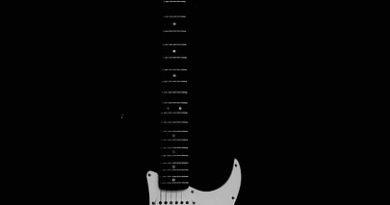Unlocking Advanced Guitar Chords: A Comprehensive Guide for Mastering Complex Shapes
Unlocking Advanced Guitar Chords: A Comprehensive Guide for Mastering Complex Shapes
Introduction: Understanding the Basics of Guitar Chords
Before diving into advanced guitar chords, it’s important to have a solid understanding of the basics. A chord is a group of notes played simultaneously to create harmony. In its simplest form, a chord consists of three notes: the root, third, and fifth. These notes determine the quality of the chord (major, minor, dominant, etc.).
As you progress in your guitar playing journey, you’ll encounter more complex chord shapes that involve additional notes and extensions. Mastering these advanced chords will unlock a whole new world of possibilities in your playing, allowing you to create rich and dynamic sounds.
1. Understanding Extended Chords
Extended chords go beyond the basic triads by adding additional notes to create more colorful and nuanced sounds. Some common extended chords include seventh chords (dominant, major, minor, and diminished), ninth chords, eleventh chords, and thirteenth chords.
To play extended chords, you’ll need to familiarize yourself with chord formulas, which dictate the specific intervals between notes. For example, a dominant seventh chord consists of the root, major third, perfect fifth, and minor seventh. Learning these formulas will help you build extended chords up and down the fretboard.
2. Mastering Barre Chords
Barre chords are essential for playing advanced chord shapes, as they allow you to move chord voicings up and down the neck. A barre chord involves using one finger to press down multiple strings across the fretboard, effectively “barreing” the entire fret.
To play barre chords effectively, it’s important to have proper technique and hand strength. Make sure to keep your thumb behind the neck, apply even pressure with your barring finger, and practice transitioning between different barre chord shapes.
3. Exploring Jazz Chords
Jazz chords are known for their complex and colorful sounds, often incorporating extended harmony and altered tones. Some common jazz chords include major seventh, minor seventh, dominant seventh, and diminished seventh chords.
To master jazz chords, you’ll need to familiarize yourself with chord voicings and inversions that create smooth voice leading and harmonic movement. Practice playing jazz standards and studying the chord progressions to deepen your understanding of jazz harmony.
4. Using Chord Inversions
Chord inversions are alternate voicings of a chord that rearrange the order of notes. Inversions can create unique textures and add movement to your chord progressions. For example, a C major chord in root position (C-E-G) can be inverted to first inversion (E-G-C) or second inversion (G-C-E).
Experiment with different chord inversions to find new ways to voice common chord progressions. Inversions can also help you navigate the fretboard more efficiently and play chords in higher positions.
5. Incorporating Open-String Chords
Open-string chords utilize the open strings of the guitar to create rich and resonant voicings. These chords add depth and color to your playing, and can be particularly effective in fingerstyle and folk styles of music.
Experiment with open-string chords by incorporating open strings into your chord voicings. For example, a D major chord can be played with an open D string (xx0232), creating a lush and full sound. Be mindful of tuning and intonation when using open strings in your chord shapes.
Conclusion: The Key to Mastery is Practice
Unlocking advanced guitar chords requires dedication, practice, and a willingness to explore new harmonic possibilities. By mastering extended chords, barre chords, jazz chords, chord inversions, and open-string chords, you’ll be able to create rich and complex sounds on the guitar.
Remember to take your time and practice consistently to internalize these advanced concepts. Experiment with different chord shapes, progressions, and styles to expand your musical vocabulary and develop your own unique sound. With patience and persistence, you’ll unlock the full potential of your guitar playing and elevate your musicianship to new heights.






